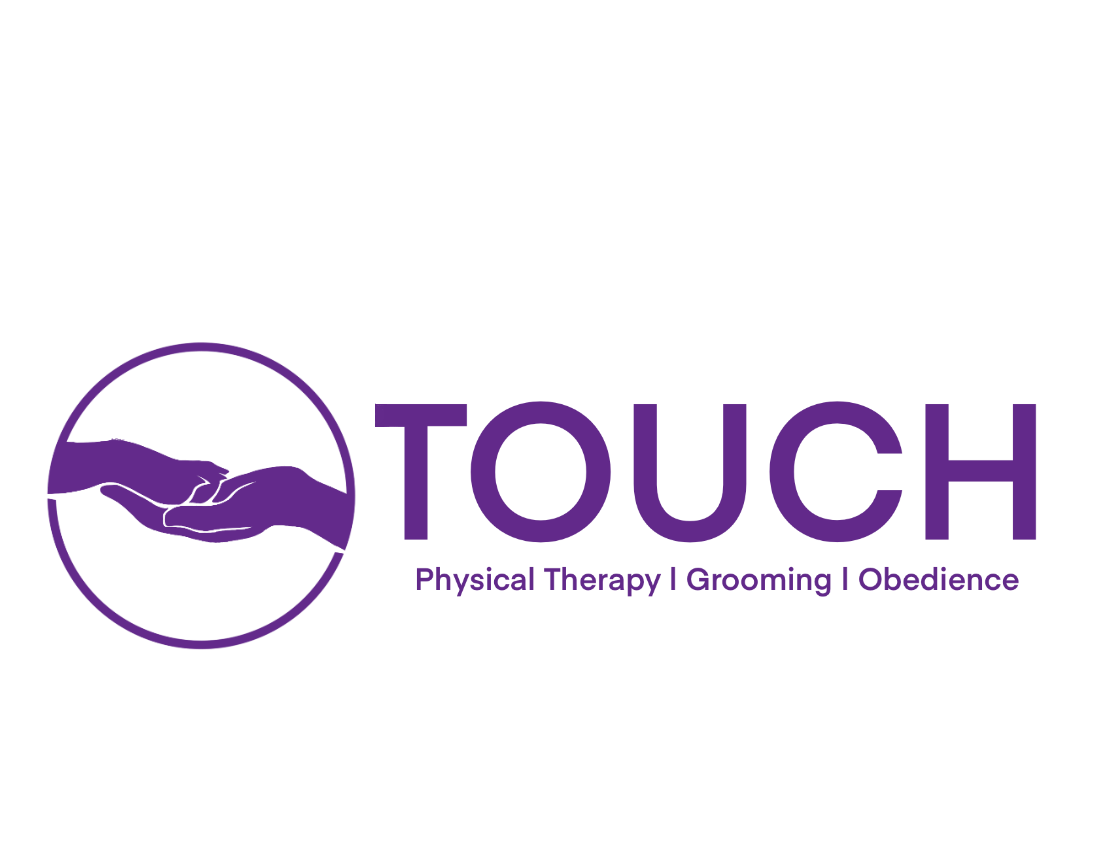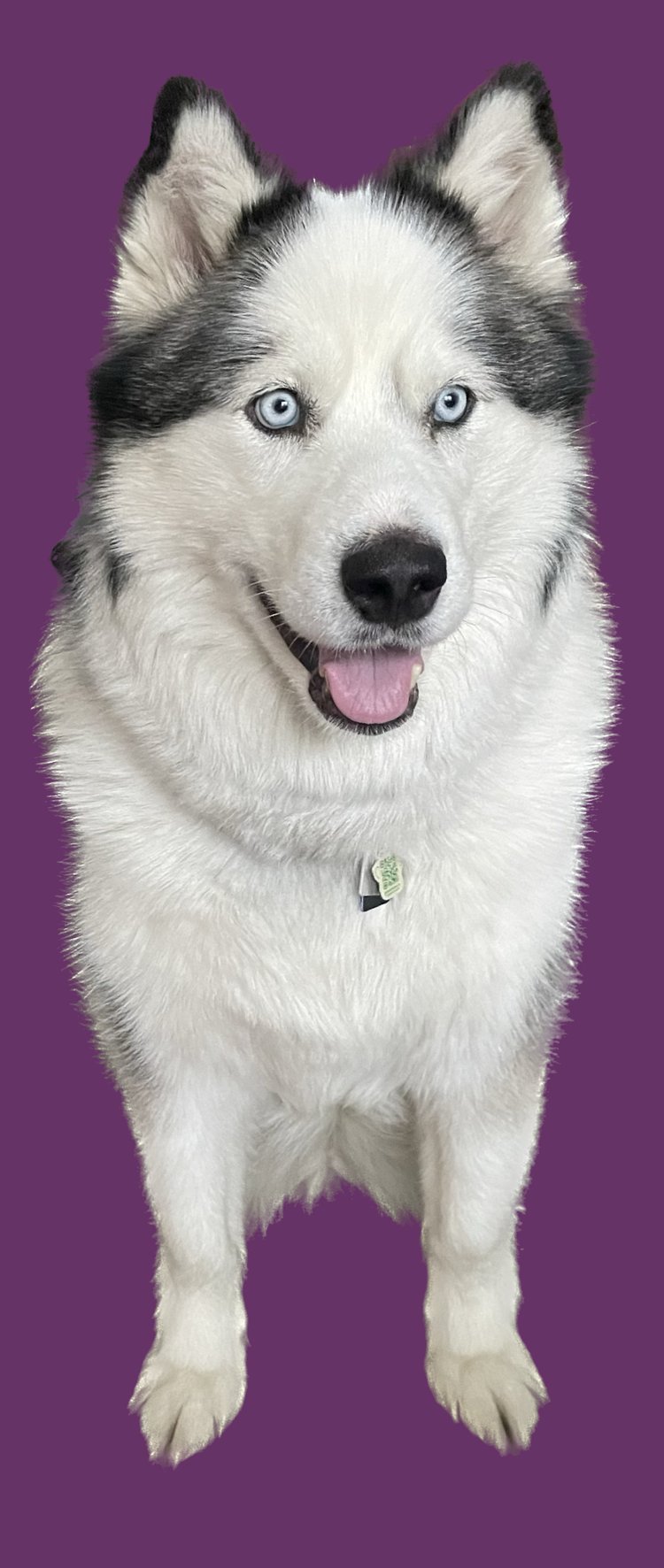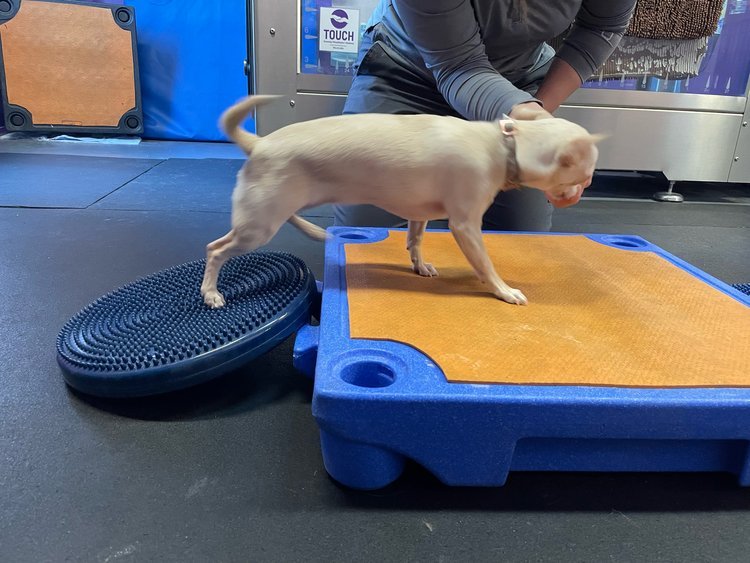WHAT IS GOOD FORM, AND WHY IS IT IMPORTANT?
What is good form?
The way in which our dogs (and us) perform specific movements throughout life are all impacted by our form. Good form refers to dogs being able to move and use their bodies in the most efficient ways possible, reducing the risk of injury. to their joints and surrounding soft tissue structures either acutely or over time.
What does good form look like in dog?
stand
A - Forelimb should be straight and joints should be over top of each other.
B - There should be a straight line from the point of the hock to the floor
C - Stifles should face forward and hind limbs should be aligned
D - Paws should face forward and the distance between paws should be even.
E - The back should be straight.
When looking from above, the left and right sides of the body should be even and mirror each other.
What to watch for:
- Uneven weight distribution between the limbs
- Curved, arched or sway back
- Paws, stifles, hocks or elbows rotating inward or outward
- Narrow or wide base stance
DOWN
A - The back should be straight. There may be a slight curve if they have a long back.
B - The forelimbs face forward and are aligned.
C - The stifles should face forward and hind paws are even when laying in a sphinx position.
D - When looking from above, both sides of the body should be even and mirror each other.
What to watch for:
- Unable to hold a sphinx position/rolling on to their hip
- Uneven flexion in the hips, stifles or hocks.
- Uncontrolled movement while getting into down position
sit
A - The back should be straight, if the dog has a long back, there may be a slight curve as seen in this photo.
B - Paws should face forward and be aligned.
C - A straight line should form from the point of the elbow to the floor and the joints are positioned underneath each other.
D - Stifles should face forward and hindlimb paws should be aligned.
What to watch for:
- Side saddling/rolling onto one side
- Uneven flexion in the hips, stifles, or hocks
- Stifles or hocks turning inward or outward
- Uneven weight distribution in the forelimbs
Why is teaching good form at a young age so important?
If a puppy is allowed to continue exercising without proper posture and they are not trained to use their bodies in efficient ways, it is highly unlikely that this will correct itself as they age. Continually placing abnormal forces on the joints and muscles will cause pain over time and increase the risk of injury.
Should your dog require physical rehabilitation in the future, one of the things that we look for is your dogs ability to sit, stand and lie down. Abnormal movements can indicate to us that there is some type of injury or disease process affecting the structure of the limb(s). If we are dealing with a dog who has not been taught good form, we then have to try and differentiate between injury or just bad habit.
As your pets parent, you know them best. You notice their quirks, habits and movement style among many other things. When we have a dog who exhibits good form on a daily basis, it can alert us, as owners, to injury quicker and we are able to get our dog the care it needs before it becomes a chronic issue. For example, if our dog can sit square normally (as shown above) and suddenly they are rolling on to their hip, it can indicate that something is wrong and should be brought up to their veterinarian.
What does a puppy exercise program look like?
When working with puppies, we must start from the foundation and work our way up. In order to move efficiently during exercise, we must first teach our puppies how to sit, stand and lie down in good form and with proper posture. Being able to maintain good form while stationary is the basis of their exercise program and we can move on to other skills when they have an understanding of these basic movements and start to create muscle memory.
One of the most important differences between a puppy exercise program and an adult program is the presence of growth plates. In puppies, the growth plates are still open as the dog has not reached it’s full size yet. Repetitive forces on the growth plates will cause damage so when doing exercises with a puppy we must keep the number of sets and repetitions low to avoid this. Under 14 months of age, speed, sharp turns, jumping and advanced strength and endurance training should be avoided due to the same reason. After 14 months of age, strength and endurance training can increase but should be done GRADUALLY.
Puppy training
When training a young dog, there are a few things we must remember. The brain is still developing and this makes it harder for them to pay attention to us for long periods and impulse control is difficult. Motor skills in young dogs are less fine than those in adults and they may not be able to offer precise movements for very long. Instead, try training more controlled movements for 30 seconds to 1 minute per session and then move onto something less controlled. To avoid frustration in both us and our puppies, short, fun, and engaging sessions are the best option. If we feel frustration during training, it will not be enjoyable for anyone and can strain the bond. Try lowering your criteria and making the task easier for them to learn, break down more complex behaviours into multiple simpler steps or stop and continue training another day if you feel frustration creeping up.
Puppy safe exercises
When creating an exercise program for puppies, we want to choose ones that create body awareness, postural stabilization, balance and flexibility. Using tools such as platforms will help to provide clarity to puppies and improve focus and success.
Some examples of puppy safe exercises are:
Front Foot Targeting
Rear Foot Targeting
Sit Stand and Down on a Platform
Sit - No Platform
While this dog is not a puppy, you can see the difference in his sit when using a platform. The platform gives him clear boundaries as to where his limbs should be placed. When he is sitting on the platform you will notice his back and forelimbs are straighter and his hindlimbs are tucked closer to his body.
Proprioceptive/Balance Track
This exercise uses a variety of proprioceptive equipment (different textures and levels of stability) placed together in a line to form a track. This introduces the puppy to different surfaces and challenges them to move their body in new ways. It is also fun and keep the puppy on their toes - literally!
If you are interested in learning more, stay tuned for the launch of our Puppy Essentials and Puppy Fitness Mini courses.
References:
Collins, A. (June 2022). Where's my paws? - Puppy proprioception and balance what to teach your younger patients (Webinar). SVPS Education.
Bhambree, B., & Dr. Murphy, K. (November 2022) Building resilience in adolescent dogs (Webinar). Behavior Vets.












